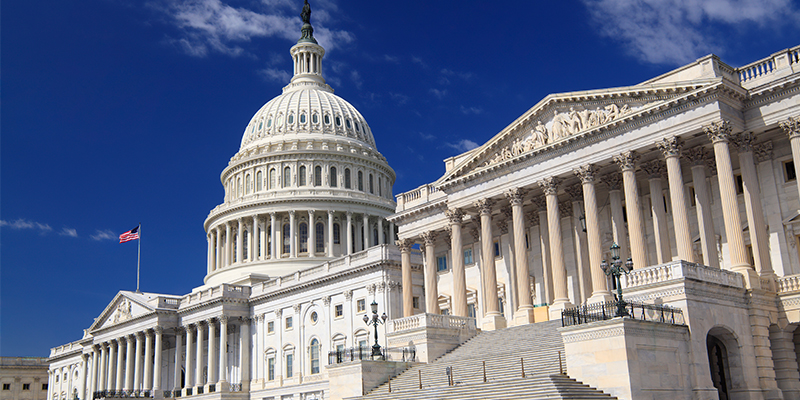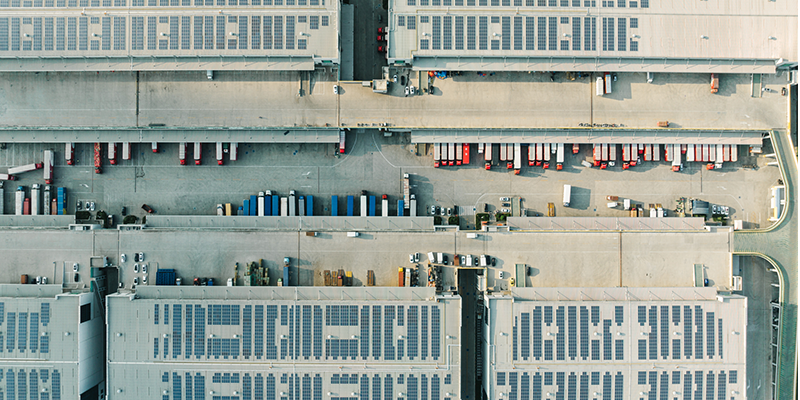By Brielle Scott
Mark Zandi, chief economist at Moody’s Analytics, shared an overview of the macroeconomic environment and potential policies of the new administration on a recent webinar hosted by Marcus & Millichap. A panel discussion followed, and NAIOP President and CEO Marc Selvitelli joined Zandi, along with Jeffrey D. DeBoer, president and CEO, The Real Estate Roundtable; Hessam Nadji, president and CEO, Marcus & Millichap; and Sharon Wilson Géno, president, NMHC, to discuss key trends for commercial real estate.
Key takeaways from their discussion:
- The U.S. economy is performing exceptionally well, Zandi said. “It’s in a good spot coming into 2025, and I think it can navigate any number of potential threats and risks that come at it.” He doesn’t expect this year to be quite as good as 2024, given the uncertainty in economic policy, but broadly believes the economy will have a solid year. GDP is tracking at about 3% (a typical year is closer to 2%), wage growth is solid, and the unemployment rate has been low for the last few years.
- Consumers are powering the economy. U.S. consumer spending has grown 2.5% per annum since the pandemic hit, the same rate as the four years prior to the pandemic. “The American consumer writ large is doing very well, though the bulk of the consumer spending is coming for the highest-level income households,” Zandi explained. “As long as the American consumer does their thing, the American economy will do just fine.”
- As always, there are upside and downside risks. Broad-based tariffs – like those introduced by the Trump administration – are inflationary and will likely lead to retaliation by countries affected by our tariffs and bring a fair amount of uncertainty, Zandi said. Other economic risks to watch include the fragile bond market, potential major cyberattacks and global supply chain disruptions.
- Expect job growth to slow – by design. With job creation slowing and unemployment stable around 4%, will we see the labor shortage increase in 2025? Job growth has been throttling back, Zandi agreed, as firms look to take the pressure off wages. He expects job growth to continue to slow as immigration decreases. “With less labor supply, we need to see less demand or else labor markets will tighter further and the Fed might end up raising rates,” he said, adding, “The one thing that raises a bit of caution is that hiring is down, though it could be because people aren’t quitting as often.” That number is one to keep an eye on. Fundamentally, the thing that matters the most to the labor market and the economy is layoffs – and the layoff rate is as low as it’s ever been. Businesses are very loath to lay off workers en masse.
- Fiscal policies of the new administration look generally favorable – for now. CRE stands to benefit from the potential renewal of the 2017 Tax Cuts and Jobs Act, said DeBoer, naming provisions including pass-through entity deductions, bonus depreciation, carried interest, and the opportunity zones program among others. “Instead of a defensive crouch, we’re in more of an offensive crouch,” he added. DeBoer expects a tax bill to move through the House in late spring, then on to the Senate, though issues like the debt ceiling could come up and impact timing. “The recent blizzard of executive orders could also slow things down,” he said. “We’ll be watching carefully how much of this tax bill is deficit-financed and how much isn’t. We’ll also be paying attention to tariffs, which have the potential to increase construction costs quite dramatically and could be inflationary across the board.”
- The office market tells two very different stories. There’s been some recovery in the office market, but it’s slow. “In a down cycle for the office sector, you see that flight to quality, and we’re seeing that,” said Selvitelli. “When you look at vacancy rates in the bigger markets, like New York City, occupancy rates in Class A properties are 93%.” However, in other markets – Washington, D.C., for one – it’s quiet in much of the downtown city center. While the return to office by big names like Amazon and JP Morgan has helped stabilize some office demand, “I think we’re still looking at 2026 before we see meaningful increase in leasing activity,” Selvitelli said.
- Multifamily in 2025 is a mixed bag. “We just saw a huge, historic delivery of multifamily units, however that significant delivery was really only concentrated in a handful of markets where there had been aggressive investment in the last several years,” said Géno. There may have been an expectation post-COVID that construction costs would come down somewhere around prior levels, but that really hasn’t happened. As a result, a lot of deals that have been in the pipeline just haven’t penciled out, she said. Developers who can start getting things in the ground will be well positioned to take advantage of what will be another significant shortage in housing that will come in 2025 and beyond.
Overall, panelists see reason for optimism in 2025. As Zandi put it, “The American economy is driving the global economy for the first time in many decades.”








